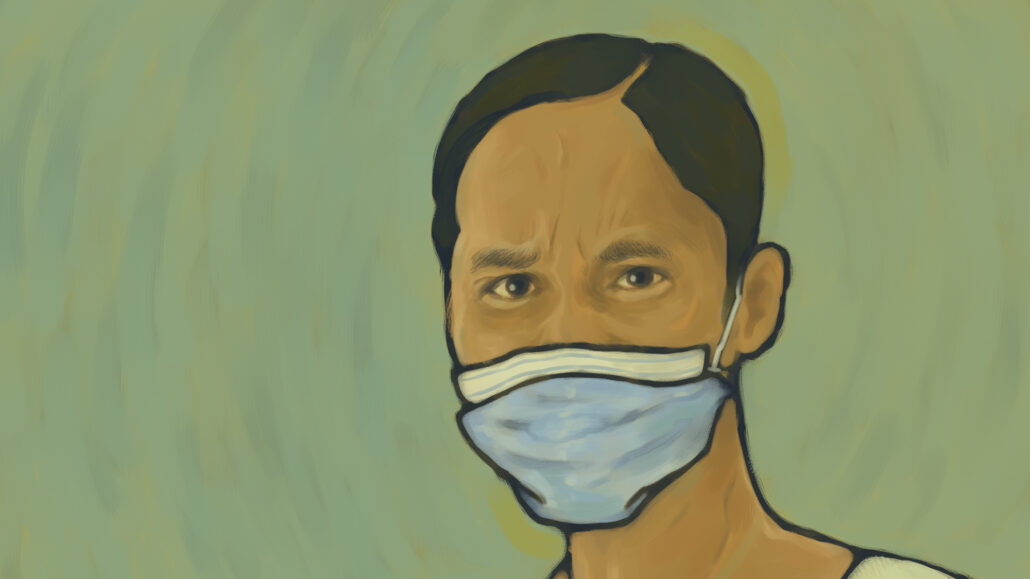2020 Yearender: Economic lessons from Jose Rizal
by Sonny Africa
Wrapping up a cataclysmic year, Jose Rizal’s legendary quote is something for the Duterte administration and its economic managers to reflect on: “Ang hindi marunong lumingon sa pinanggalingan ay hindi makakarating sa paroroonan.”
The worst economic collapse in Philippine history and in Southeast Asia is mainly due to the government’s stumbling pandemic response and lackluster economic measures in 2020. If, again, there is more bluster than action in 2021 then real recovery will be much farther away than it should be.
Big promises
The economic managers announced a grandiose “4-Pillar Socioeconomic Strategy Against COVID-19” in April. The “Grand Total” of Php1.17 trillion was equivalent to 6.3% of gross domestic product (GDP) and sought to give the impression of grand action. This number was extremely misleading though.
There was significant double-counting. Supposedly Php338.9 billion in government spending on emergency support and health measures was counted alongside Php615 billion in borrowing – almost half of which debt was not even really going to be spent on COVID response. Another Php220.5 billion in additional liquidity and tax relief was also added.
The latest package released in October corrects some of these deceits while introducing new ones. The “Grand Total” is now an imposing Php2.57 trillion equivalent to 13.8% of GDP. The borrowing was removed while emergency support and health measures increase to Php558.8 billion. Emergency support now includes supposedly Php132 billion in credit guarantee and loan programs for small business.
The value of the package is particularly inflated by Php1.31 trillion in additional liquidity from Bangko Sentral ng Pilipinas (BSP) measures, Php459 billion in estimated incremental loans to MSMEs, and Php61.3 billion in foregone tax revenues especially because of corporate income tax cuts under the Corporate Recovery and Tax Incentives for Enterprises (CREATE) bill.
These are still misleading. The additional liquidity and incremental loans cited do not mean actual investments or economic activity. Smaller businesses are not borrowing because of collapsed aggregate demand and uncertain market conditions – the “incremental loans to MSMEs” are just an illustrative extrapolation from a Php45 billion capital infusion to government financial institutions. Banks meanwhile are becoming more risk averse with non-performing loans already nearly doubling to 3.2% of total loans in October from 1.7% in the same period last year.
The big numbers seem to be designed for press releases and media briefings to convince the public that the Duterte administration is undertaking herculean efforts to boost the economy. The reality is very different.
Tiny action
Measured against the economic devastation from poor pandemic containment – including over-reliance on long and harsh lockdowns and under-investment in effective testing, tracing, quarantines and isolation – government efforts border on the trivial. The most recent official estimate of -9% real GDP growth in 2020 means that the economy will be Php1.74 trillion smaller than in 2019.
There has not really been any stimulus which, to mean anything, has to involve significant additional spending beyond pre-pandemic levels. The government originally projected Php4.21 trillion in disbursements in 2020. Upon the pandemic, planned disbursements increased only slightly by Php121.4 billion to Php4.34 trillion or just a 2.9% increase.
Measured in current prices, GDP in 2019 was Php19.52 trillion which means that additional government spending in 2020 will be equivalent to just 0.6% of GDP in 2019. The economic managers refuse to spend more because of their fixation on being creditworthy to foreign debtors. The stingy non-stimulus is due to their narrow-minded fiscal conservatism.
How to reconcile this with the Php500.7 billion figure allotted for COVID-19 response as of mid-December – consisting of Php386.1 billion under Bayanihan 1, Php6.6 billion under Post-Bayanihan 1, and Php108 billion under Bayanihan 2? Most of this spending comes from existing budget items – either discontinued programs/projects (Php306.7 billion), existing special purpose funds (Php109.3 billion), regular agency budgets (Php21.2 billion), and unutilized automatic appropriations/excess revenue collections (Php63.5 billion).
The Bayanihan 2 funds released also do not even seem to have been spent yet including for vital cash assistance. The social welfare department supposedly has Php6 billion budget for around 1.2 million beneficiaries. As of mid-December, only Php931 million has actually been disbursed to just 142,058 beneficiaries.
It is likewise with labor department emergency assistance of Php16.4 billion for around 800,000-1.4 million formal workers under CAMP, 500,000 informal workers under TUPAD, and 200,000 OFWs under AKAP. Only 350,000 workers have been reported to get assistance as of the first week of December.
The rigidity and obsession with creditworthiness unfortunately carries over into the New Year. The recently approved Php4.5 trillion national government budget for 2021 is 9.9% larger than the 2020 General Appropriations Act (GAA). This increase is smaller than the historical annual average increase of 11.1% since 1987. It is actually even smaller than previous budget increases of the Duterte administration in 2017 (23.6% increase) and 2020 (13.6%). So, again, there’s no stimulus there.
Devastating consequences
The Duterte government’s inadequate efforts are behind the extreme economic collapse and excessive suffering of tens of millions of Filipino families. The biggest blunder is the failure to contain COVID-19 – economic activity will remain repressed as long as the pandemic is raging. The administration diverts from this original sin whenever it invokes the false dichotomy between health and the economy.
The stingy fiscal response and inappropriate monetary measures come on top of that. The lockdowns and continued physical distancing have most of all caused household incomes, business investments and aggregate demand to collapse. These warrant a much larger fiscal response especially in terms of emergency assistance to households to improve their welfare and boost consumption spending in the economy.
Yet the economic managers were stingy in providing cash assistance under Bayanihan 1 – at the height of the draconian lockdowns – and only deign to give token amounts under Bayanihan 2 and in the 2021 national government budget. The trillion peso liquidity infusions gave the illusion of meaningful intervention but, with domestic and even global demand so weak, were really just pushing on a string with little or no results.
Measured as a share of GDP, the Philippines has the smallest fiscal response in Southeast Asia – which, along with the poor health response, goes far in explaining its experiencing the biggest economic contraction in the region. The economy is smaller today than it was in 2018, and will likely only return to its size last year at the earliest by 2022.
The insistence of the economic managers that the economy was going strong coming into the pandemic harkens to glory days that never were. Economic growth has been slowing in every year of the Duterte administration from 6.9% in 2016. This fell to 6.7% in 2017, 6.2% in 2018, and 5.9% in 2019. Average annual employment growth of 1.2% in 2017-2019 is the lowest in the post-Marcos era.
The number of employed Filipinos in 2020 has fallen to its lowest in four years. The 39.4 million reported employed Filipinos in 2020 (average for the whole year) is 2.6 million less than in 2019, and even less than the 41 million reported employed four years ago in 2016.
There were probably at least 5.8 million unemployed Filipinos and an unemployment rate of 12.7% as of October 2020, more than the official count of just 3.8 million if the nearly two million invisibly unemployed for dropping out of the labor force due to the pandemic shock are also counted. There were more unemployed Filipinos in 2020 at any time in the country’s history.
Domestic unemployment is bloated by displaced overseas Filipino workers (OFWs). The labor department reported over 680,000 OFWs seeking emergency assistance as of end-November. Deployments have also drastically collapsed with the 682,000 OFWs leaving in the first nine months of the year a huge 60% less than the 1.7 million deployed in the same period last year.
Household incomes are collapsing. Family incomes are only measured every three years with the last time this was done being in 2018. At the time, 17.6 million Filipinos were estimated to fall below the low official poverty threshold of about Php71 per person per day. In a worst case scenario of incomes contracting 20% without emergency cash subsidies, the Philippine Institute for Development Studies (PIDS) estimates the number to rise to as much as 29.7 million.
As it is, extrapolating from BSP Consumer Expectations Survey data, as much as 2.6-3.2 million households have had their savings wiped out by the pandemic economic shock. These are the vulnerable families whose income and livelihood losses were so large as to eat up their savings that were so low to begin with.
Lessons for 2021
The plight of tens of millions of Filipinos adversely affected by the pandemic and poor government response is not helped by the administration insisting that all is well.
The government could have pre-empted complete economic decline with a more rapid and effective health response as in Vietnam and Thailand. This remains the most urgent concern today. Unfortunately, despite relatively large numbers of COVID-19 testing, contact tracing and quarantining are lagging which means the coronavirus is still spreading. The vaccine-driven strategy is also not reassuring with emerging controversies around procurement, potential distribution bottlenecks, and self-serving preferential inoculation.
Economic distress in 2020 could also have been mitigated by a larger and better economic response of more emergency assistance, bigger support for MSMEs and domestic agriculture, and larger government spending on social infrastructure and services. These could also have been paid for with a more creative debt and finance mobilization strategy.
Instead, the Duterte administration’s poor health and economic response has resulted in the destruction of large swathes of service-oriented informal sector livelihoods, hundreds of thousands of displaced workers, reduced wages and benefits, worsened insecurity, MSME closures, and record joblessness. The wealthiest families and biggest corporations on the other hand will easily weather momentary income losses, with many even seeing their profits and market shares increase.
And yet despite a meager economic response, the budget deficit is soaring to record highs because of the collapse in revenues and continued misprioritization of infrastructure, militarism and debt service. Government debt is moreover bloating not to finance COVID-19 response but mainly to pay for unchanged government spending mispriorities.
The biggest economic lesson of 2020 is clear – the government has a vital role in economic development especially in times of crises. COVID-19 hit the entire world and the difference was in how each country dealt with it. The public has a right to decent governance which civil society groups and many other concerned Filipinos have been asserting throughout the year, many even at great risk to their lives and liberty.
Sustained administration disinformation and diversionary tactics seek to hide a plain fact: the government’s mismanagement of the pandemic and economy is behind the worst economic collapse in the region and in Philippine history. The coming year can be better only if the people keep working at changing the government and governance for the better.
As Rizal of course also asserted: “There are no tyrants where there are no slaves.” #
= = = = =
Kodao publishes IBON articles as part of a content-sharing agreement.



